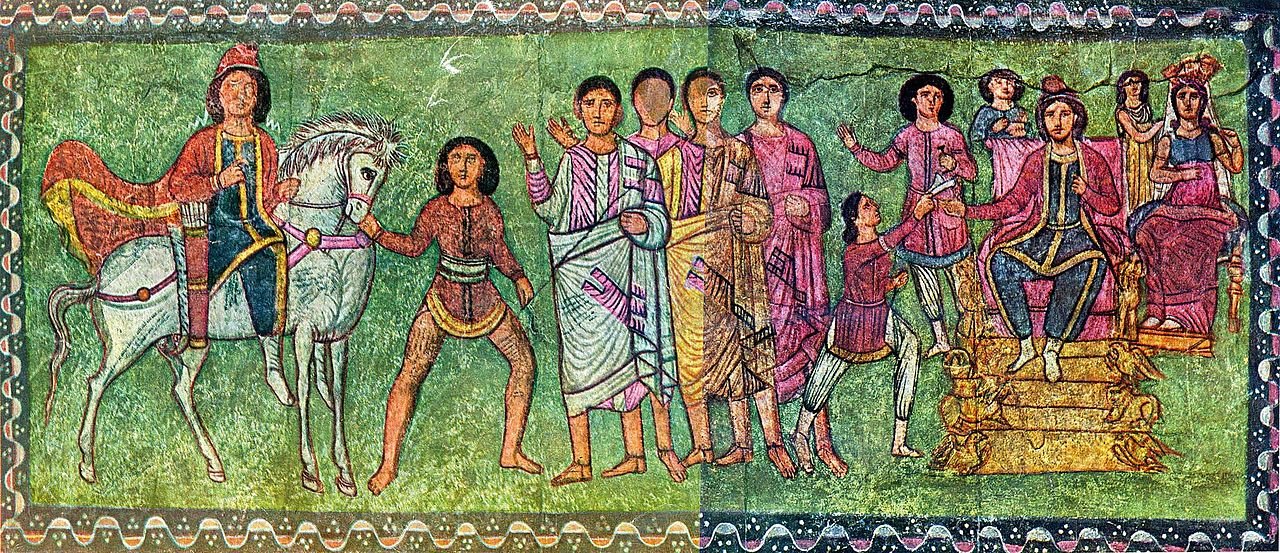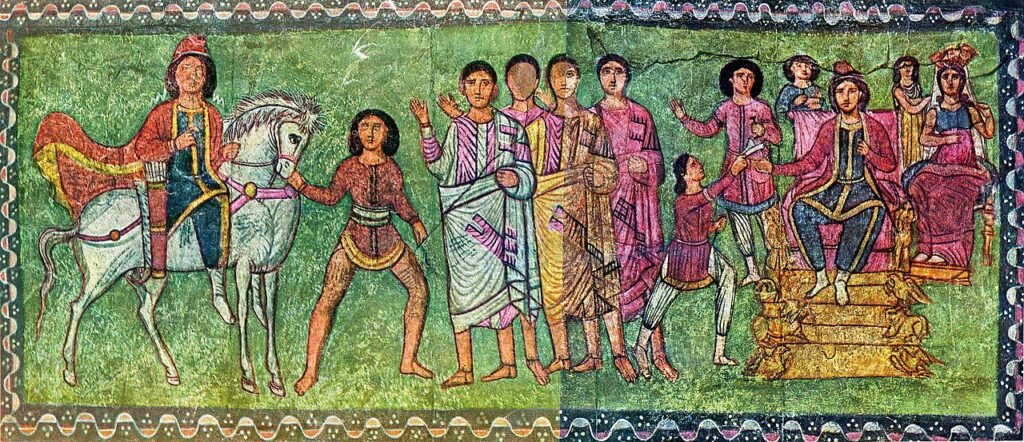Unveiling the Parthian Kings: A Comprehensive List of Rulers
The Parthian Empire, which thrived from 247 BCE to 224 CE, was one of the most powerful and influential ancient civilizations in the Near East. With an extensive realm stretching from the Euphrates River to the borders of India, this powerful empire was ruled by a succession of mighty monarchs known as the Parthian Kings. In this article, we will take a deep dive into the history of the Parthian Kings, exploring their rise to power, their lineage, notable rulers, military conquests, cultural contributions, diplomatic relations, and ultimately, the factors that led to the decline and fall of the Parthian Empire.

The Rise of the Parthian Empire: A Brief Background
The rise of the Parthian Empire can be traced back to the overthrow of the Seleucid Empire by Arsaces I in 247 BCE. This marked the beginning of the Parthian dynasty, which would go on to establish a formidable empire in the heartland of ancient Persia. The Parthians, a nomadic people from the Eurasian steppe, skillfully combined their military prowess and political astuteness to expand their dominion over the centuries.
Parthian Succession: An Insight into the Monarchy System
The Parthian monarchy followed a unique system of succession known as “tanistry.” This system allowed the ruler to designate his successor during his lifetime, often favoring a chosen member of the royal family. However, the final decision rested with the electors who belonged to the noble families. This process ensured stability and reduced the potential for power struggles within the empire.
Arsacid Dynasty: Unraveling the Lineage of Parthian Kings
The Parthian Kings were part of the Arsacid dynasty, which traced its ancestry back to Arsaces I, the founder of the empire. The dynasty remained intact for over four centuries, with each king contributing to the growth and development of the empire in his own unique way. The Arsacid lineage played a significant role in shaping the political landscape of the Parthian Empire.
Notable Parthian Rulers: Profiles of Influential Monarchs
Several Parthian Kings left an indelible mark on the empire through their remarkable leadership and achievements. Some notable rulers include Mithridates I, who expanded Parthian territory to its greatest extent, and Orodes II, who successfully defended the empire against Roman invasions. Additionally, the renowned King Pacorus I led successful military campaigns against the Roman Republic, establishing Parthia as a formidable force in the region.
Military Prowess of Parthian Kings: A Legacy of Conquests
The Parthian Kings were renowned for their military prowess, particularly their skilled horse archers and mastery of cavalry tactics. They successfully repelled numerous invasions, including those from the Roman Empire, and expanded their empire through conquest. The Parthian army’s mobility and innovative warfare strategies were instrumental in their victories, making them a force to be reckoned with on the battlefield.
Cultural Contributions of the Parthian Empire: Arts and Architecture
The Parthian Empire made significant contributions to the arts and architecture of the ancient world. Parthian art was characterized by a fusion of Hellenistic and Persian influences, resulting in unique sculptures, pottery, and metalwork. Architecturally, the empire adopted elements from various cultures, including the Parthian-style arch, which had a lasting influence on subsequent civilizations.
Diplomatic Relations: Parthian Kings on the World Stage
The Parthian Kings were skilled diplomats who maintained diplomatic relations with neighboring empires, including the Roman and Chinese empires. Parthia played a vital role in the Silk Road trade, facilitating cultural exchange and commerce between the East and the West. The empire’s strategic location made it a significant player in international politics and trade.
Decline and Fall: Factors Leading to the End of the Parthian Empire
The decline of the Parthian Empire can be attributed to a combination of factors. Internal conflicts, power struggles, and the rise of powerful vassal kingdoms weakened the empire. Additionally, the relentless pressure from the Roman Empire and the Sassanian Persians further eroded the Parthian power base. These factors, combined with economic instability and social disintegration, ultimately led to the downfall of the Parthian Empire.
Legacy of the Parthian Kings: Influence on Successive Civilizations
Despite its eventual collapse, the Parthian Empire left a lasting legacy on successive civilizations. Its military tactics and strategies influenced the Roman Empire and Byzantine armies. The empire’s cultural and artistic contributions continued to inspire future generations. Moreover, the Parthian Empire played a significant role in the historical development and trade networks of the Silk Road, leaving an enduring impact on the economic and cultural landscape of the ancient world.
Unveiling the Parthian Kings: A Comprehensive List of Rulers
The Parthian Empire and its mighty kings have left an indelible mark on history. Through their political astuteness, military prowess, and cultural contributions, the Parthian Kings shaped ancient civilizations and influenced the course of events in the Near East. Despite its eventual decline, the legacy of the Parthian Empire lives on, reminding us of the power and lasting impact of this once-mighty civilization.
| (c. 247 – 211 B.C.) | Arsaces I | ||
| (c. 211 – 191 B.C.) | Arsaces II | ||
| (c. 191 – 176 B.C.) | Phriapatius | ||
| (c. 176 – 171 B.C.) | Phraates I | ||
| (c. 171 – 138 B.C.) | Mithradates I | ||
| (c. 138 – 127 B.C.) | Phraates II | ||
| (c. 127-125 B.C.) | Interregnum | ||
| (c. 127 – 124 B.C.) | Artabanus I | ||
| (c. 123 – 88 B.C.) | Mithradates II | ||
| (c. 95 – 90 B.C.) | ??? | Gotarzes I
(Rival) |
|
| (c. 90 – 80 B.C.) | Orodes I | ||
| (c. 80 B.C.) | ??? | ||
| ??? | |||
| (c. 77 – 70 B.C.) | ??? | Sinatruces
(Rival) |
|
| (c. 70 – 57 B.C.) | Phraates III | ||
| (c. 70 B.C.) | ??? | Darius of Media Atropatene
(Rival) |
|
| (c. 57 – 54 B.C.) | Mithradates III | ||
| (c. 57 – 38 B.C.) | Orodes II | ||
| (c. 39 B.C.) | ??? | Pacorus I
(co-ruler) |
|
| (c. 38 – 2 B.C.) | Phraates IV | ||
| (c. 29 – 26 B.C.) | ??? | Tiridates I
(Rival) |
|
| Queen Musa | |||
| (c. 2 B.C. A.D. 4) | Phraataces | ||
| (c. A.D. 6) | Orodes III | ||
| (c. A.D. 8 – 12) | Vonones I | ||
| (c. A.D. 10 – 38) | Artabanus II | ||
| (c. A.D. 35 – 36) | ??? | Tiridates II
(Rival) |
|
| (c. A.D. 40 – 47) | Vardanes I | ||
| (c. A.D. 40 – 51) | Gotarzes II | ||
| (c. A.D. 50 – 65) | ??? | Sanabares
(Rival) |
|
| (c. A.D. 51) | Vonones II | ||
| (c. A.D. 51 – 88) | Vologases I | ||
| (c. A.D. 55 – 58) | ??? | Vardanes II
(Rival) |
|
| (c. A.D. 77 – 80) | Vologases II | ||
| (c. A.D. 78 – 105) | Pacorus II | ||
| (c. A.D. 80 – 90) | ??? | Artabanus III
(Rival) |
|
| (c. A.D. 105 – 147) | Vologases III | ||
| (c. A.D. 109 – 129) | ??? | Osroes I
(co-ruler) |
|
| (c. A.D. 116) | ??? | Parthamaspates
(Rival) |
|
| (c. A.D.129 – 140) | ??? | Mithradates IV
(Rival) |
|
| (c. A.D. 140) | ??? | ||
| (c. A.D. 147 – 191) | Vologases IV | ||
| (c. A.D. 190) | ??? | Osroes II
(Rival) |
|
| (c. A.D. 191 – 208) | Vologases V | ||
| (c. A.D. 208 – 226) | Vologases VI | ||
| (c. A.D. 216 – 224) | ??? | Artabanus IV
(co-ruler) |
|
| (c. A.D. 224 – 228 | ??? | Tiridates III
(Rival) |


